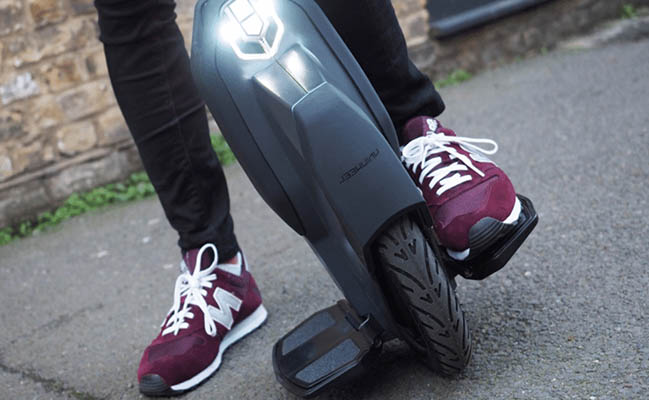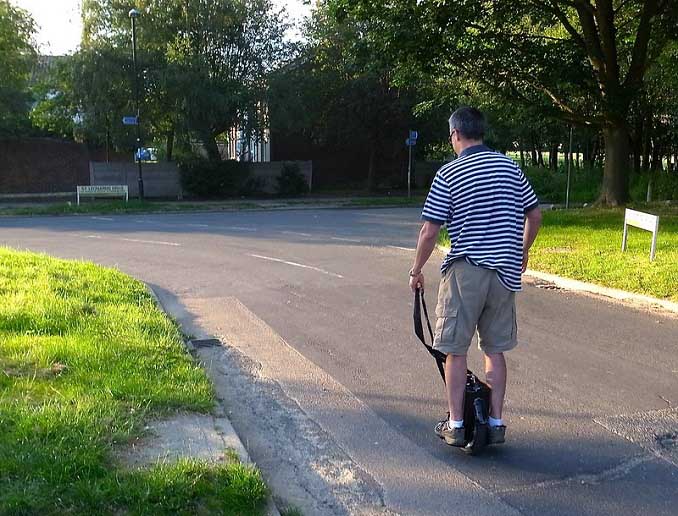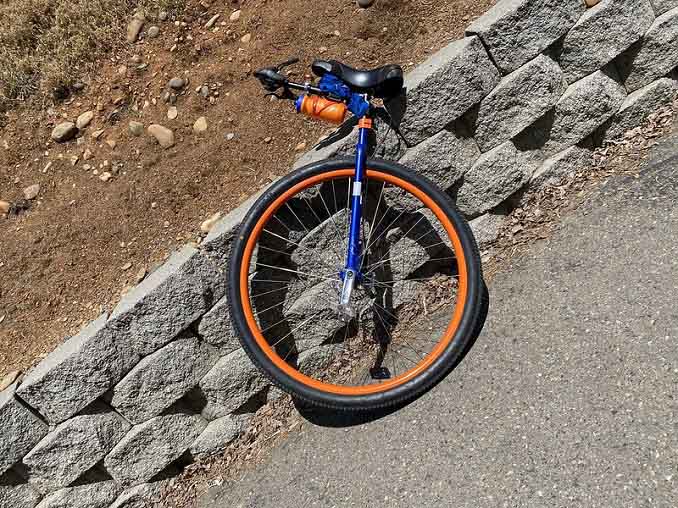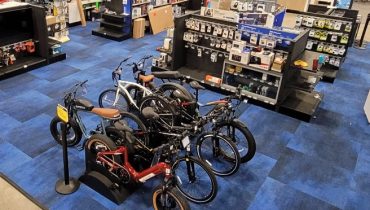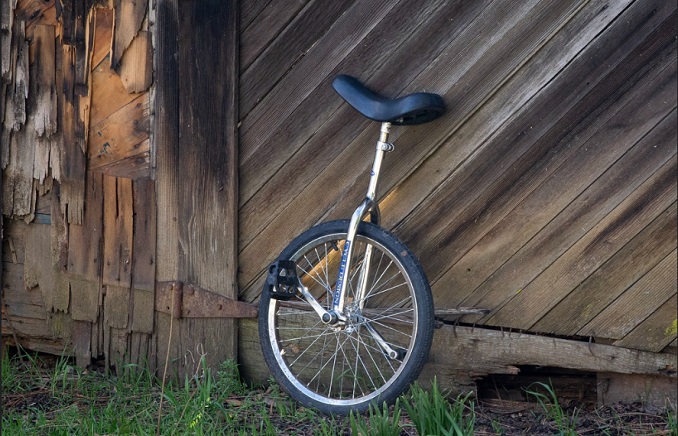The bicycle or unicycle pump is an accessory that no cyclist can do without!
A must-have resource in every biker’s accessory backpack, the pump is capable of saving any ride during emergency situations and unexpected events of all kinds: at risk of a flat tire during a countryside ride kilometers away from home? Are wheels too deflated to pedal well but no pressure pump center nearby?
With a unicycle pump, it is possible to solve any unexpected event and enjoy the ride without too many worries.
From hand pumps to pedal pumps, to CO2 cartridges, you can find many different types of unicycle pumps on the market, perfect for professionals as well as beginners or enthusiasts.
So, how do you choose the most suitable model for your needs? There are multiple factors to consider, including the model of your bike, the type of attachment, the presence of a pressure gauge, stability, compatibility with various valves, and weight.
Don’t worry, we are here to help you: here is a comprehensive guide to help you choose the best unicycle pump available on the market!
Note: The instructions provided in this article can also be applied to other personal means of transportation such as unicycles, onewheels, bikes, scooters, and more.
What are unicycle pumps used for and how do they work?
Let’s start by explaining what unicycle pumps are and what their main uses are. This tool is characterized by a cylindrical-shaped body inside which there is a piston equipped with a membrane and a stopping point represented by a non-return valve.
In the end, a tube is connected with an attachment that is inserted into the valve of the unicycle wheel. Once activated manually, the piston will move the air inside the cylindrical body, pushing it towards the tube, which will then pass it into the inner tube.
This system, therefore, allows you to inflate the inner tube present in the unicycle wheel, just below the tire, both when you notice that a wheel is flat, and in case of puncture. Having a well-inflated wheel helps the cyclist to pedal better, reducing fatigue and optimizing energy.
The functioning system is common to most unicycle pumps on the market, regardless of the type. What will change is the practicality, weight, ease of use or the presence or absence of a pressure gauge.
Below, you will find some useful information on how they work and the types available on the market, concluding with a ranking of the top 7 best unicycle pumps!
[table id=6 /]
Related:
- Best Elbow Pads for Mountain Unicycling: Which Ones to Choose?
- Ride Safe: How to Choose the Perfect Electric Vehicle Helmet
Types of Unicycle Pumps
The most common types of pumps available on the market are hand pumps, foot pumps, floor pumps, and CO2 cartridges.
Portable Unicycle Pump
Portable hand pumps are small and compact, making them particularly convenient and easy to carry during trips and excursions.
Due to their small size and lightness, they are hardly able to reach a pressure of more than 7 bar, making them more suitable for emergency situations rather than professional interventions.
Foot Unicycle Pump
Foot pumps, on the other hand, are larger than hand pumps and heavier, so they can reach a pressure of 9 bar and require more effort. To use them, pressure must be applied to the foot, which is used to activate the piston and push the air towards the valve.
Much less convenient to carry around, they are bulkier and it is difficult to think of being able to put them in a backpack, so it’s better to leave them in the garage and use them when you’re still at home.
Floor pump for bike inflation
Floor pumps are the most suitable for professional use as they allow for pressure regulation of the tires. They have a handle connected to the piston that is manually activated by raising and lowering it and can reach a pressure greater than 16 bar.
They are efficient, durable, and stable devices, with the only disadvantage being that due to their size, they cannot be used for unexpected situations outside of the home.
CO2 pump
Although not actual pumps, CO2 canisters are an excellent device for inflating bike tires. Sold in kits, they are particularly useful in case of a puncture or other unexpected situations, so it may be useful to have one within reach when out of the house.
Before moving on with the guide, remember that the operating systems do not change much between the models, but the difference lies in the size, convenience, and precision of the device.
Ranking of the Best Bike – Unicycle Pumps
After seeing the most common types of bike – unicycle pumps available on the market, here’s the ranking of the top five best bike – unicycle pumps available.
SKS RENNKOMPRESSOR
Built to efficiently perform its task in a short amount of time, the SKS Rennkompressor is capable of generating significant pressure when in use. This pump also features a system to prevent air leaks from its nozzle, making it even faster.
Despite being a column model, the SKS Rennkompressor is designed to take up very little space when stored between uses. It boasts large and comfortable feet attached to the base, which can be folded when not in use, significantly reducing its size.
Between the feet, there is an analog pressure gauge with a large dial that can be easily read without having to bend over too much. It is also covered in rubber on the outside to prevent damage in case of falls or impacts. Thanks to it, you can monitor the pressure level, up to a maximum of 16 bar or 230 PSI.
This special pump stands 65 cm tall, has a 125 cm long hose, is made of steel, and has wooden handles on the piston. Its attachment is universal and compatible with AV, SV, and DV valves, as well as having a lever to lock it during inflation to reduce time and waste.
BV – Ergonomic Floor Pump
The fifth and final spot on this list is occupied by the BV floor pump, equipped with a smart valve head and a pressure gauge.
Particularly appreciated for its ergonomic features, this floor pump is suitable for everyone, from novice cyclists to the most experienced.
The steel barrel allows for more air to be pushed through the pump, making inflation easier and shorter. In addition, the device is equipped with a large-caliber system that is easy to read and allows you to set the desired pressure in a very practical way.
Weighing only 900 grams and standing at about 60 cm in height, the BV floor pump also has an extra-long tube with a 360-degree rotation margin to facilitate pumping, as well as a double lockable valve, an oversized handle, and a stable non-slip base. Although mainly suitable for Presta and Schrader valves, the BV pump also adapts to other types, ensuring 100% grip and avoiding the risk of air loss.
This pump can inflate to a pressure of 11 bar, or 160 psi, and the gauge can be set in either unit of measurement.
The BV floor pump is suitable for both competitive and amateur use and can also be used to inflate sports balls, pool floats, or water tubes. The kit comes with a bag to store the pump and an extra set of needles that can be used to inflate other items, in addition to tires and inner tubes.
PRO BIKE TOOL Mini Pump
Perfect for putting in your backpack before a bike ride, weighing only 127 grams and less than 23 cm long, Pro Bike Tool is undoubtedly the best portable pump available on the market.
Despite its small size, Pro Bike Tool guarantees fast, accurate, and powerful pumping, reaching a pressure of 7.5 bar, or 100 psi. Thanks to the innovative design, this machine’s piston requires 30% fewer strokes than its competitors, speeding up the process and reducing the effort required.
The inflation hose adapts to any type of valve without the need for adapters, even reaching those located in difficult places, and ensures 100% grip, avoiding air leaks.
Ideal for any type of bike – unicycle, including mountain bikes, mountain unicycles, and racing bikes.
Beto Universal Aluminum Floor Pump
Thanks to its wide and stable base, using Beto Universal Aluminum Floor Pump to inflate tires will be a breeze. The pump also features two practical handles coated with soft, ergonomically shaped rubber, making it easy to grip and slip-resistant.
Practical and versatile, Beto Pump has a slim and lightweight column structure, mainly composed of steel, ensuring that it remains safe and performs for a long time without risking damage from accidental bumps. The rubber handle is also comfortable to grip, allowing for a firm hold during use.
It offers a double attachment that is compatible with the three main types of valves, namely SV, AV, and DP, so there is no need to procure multiple adapters to use this pump on different bikes – unicycles. Additionally, it can always be relied on for excellent airflow, with a maximum pressure of 11 bar or 160 PSI.
To easily check the level of inflation reached, simply glance at the wide and easily readable integrated pressure gauge, positioned between the two feet. These feet were added to provide stability to the accessory and allow the user to stand on them to keep the pump securely on the ground while operating the plunger.
IDMAX Double Barrel Foot Pump
The IDMAX Double Barrel Foot Pump is a great choice for anyone in need of a reliable and efficient pump for their tires. This pump boasts sturdy and durable construction, with its double cylinder system and steel frame ensuring its quality and long-lasting performance.
Additionally, it is equipped with a pressure gauge that allows for accurate and quick inflation of inner tubes, with a maximum pressure of 11 bar, or 140 psi.
The IDMAX Double Barrel Foot Pump is safe to use due to the anti-skid design on the pedal that prevents slipping during pumping. The air pipe joint adopts a thread design, making it easy to fix the pipe well, take it apart easily, and also prevent frostbite, making it suitable for use even in cold weather.
You can also use it for various purposes like baby carriages, wheelchairs, unicycles, mountain bikes, and other vehicles that require air pressure. This pump is perfect for both indoor and outdoor use.
Pro Bike Tool – CO2 Inflator
The fourth spot is again occupied by a Pro Bike Tool product, but this time it’s the beloved CO2 canister.
Easy to handle and convenient to transport, the CO2 inflator is mainly suitable for cyclists participating in races, or during a group ride, a Gran Fondo, or a time trial, as opposed to the pumps listed so far, which are more suited for individual sports and cycling tourism.
The CO2 pump allows you to quickly and reliably inflate your tire and get back to cycling after a flat. The Pro Bike Tool device is equipped with a one-turn valve system that allows you to inflate the tire in seconds with extreme precision. The valve has a secure and tight connection, ensuring maximum grip and avoiding the risk of leaks.
Made entirely of aluminum and compatible with food-grade threads, the CO2 canister is small, compact, and very lightweight, so it can be stored under the saddle.
In short, an economical and efficient device that has only one drawback: it is compatible with Presta and Schrader valves, and an adapter must be purchased for other types.
VeloChampion – Mini Hand Pump
Made entirely of alloy and compatible with Presta, Schrader, and Dunlop valves, the VeloChampion mini hand pump is ideal for carrying with you during cycling tours and bike excursions, as it is compact, durable, easy to use, and particularly quick to inflate.
At just 120 grams, this mini hand pump can achieve a maximum pressure of 7 bar, which is up to 100 psi, and requires about 20% less inflation time than other direct competitors, allowing you to quickly inflate a flat tire and get back on the road.
Perfect for unicycles, mountain bikes, electric bikes, as well as strollers, and children’s prams, the kit also includes a bike frame mount and useful tools for quick and non-professional repairs.
Choosing a Bike – Unicycle Pump: Tips and Tricks
Now that you know the differences between the various types of pumps, let’s take a look at what factors to consider when choosing the right one for your needs.
Compatibility with valves is certainly an important factor to check, but stability, durability, and portability are also essential, especially if you’re looking for a product to take with you.
Moreover, your choice should also take into account the type of bike you have, whether it’s a road bike – unicycle or a mountain bike – unicycle.
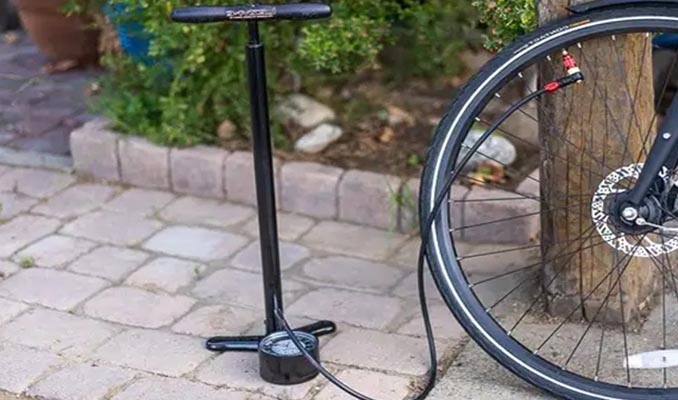
How to Choose a Bike – Unicycle Pump
Valve Compatibility
One of the first things to consider is the compatibility of the pump’s attachment with the valves of your tires. There are two types of valves commonly used: Presta and Schrader.
Presta valves are mostly used for road bikes – unicycles or tubeless MTBs and have a diameter of 6 mm, while Schrader valves, similar to those used for car tires, are found on MTBs and have a diameter of 8 mm.
Generally, pumps available on the market are compatible with both types of valves as they provide all the necessary adapters for inflating tires with both Presta and Schrader valves.
Inflation Pressure
A good pump must be able to provide the different inflation pressures required for different types of bikes. For example, a road bike – unicycle requires an inflation pressure of 9 bar, while MTBs need 1.7 bar.
Purchasing a pump that can meet these different inflation needs will provide a versatile product that can be used on different bikes and save you money.
Air Volume
Air volume refers to the amount of air that the piston can transfer to the tire. A high air volume means that you will need to push the pump handle fewer times to reach the desired pressure.
A low air volume, on the other hand, will transfer less air to the tire, forcing you to operate the pump handle more times, consuming more time and energy.
Intended Use
The purchase of a pump should also be evaluated taking into account the intended use. Are you looking for a product to take with you when you go out or do you need a model for regular tire pressure maintenance? In the first case, the most recommended pumps are hand-held or CO2 cartridges.
These are compact solutions, with reduced dimensions and weight, that can be fixed directly to the bike frame, very useful for emergency repairs. If you are looking for a more solid, resistant, and precise product, it is advisable to opt for a floor or pedal model, both with higher and more accurate pressure capacity than hand-held pumps.
Bike – Unicycle Type
Depending on the type of bike – unicycle you have, you can choose one model over another. In this case, it is important to consider the recommended tire pressure for your bike, generally indicated directly on the tire.
For road bikes, this value is around 6-9 bar, for city bikes between 2 and 5 bar, and for mountain bikes between 2 and 4 bar. Considering these values, it is advisable to opt for a floor or pedal model for a road bike, which ensures adequate pressure. For other types of bikes, however, you can also choose models with lower maximum pressure.
Pressure Gauge
The presence of an integrated pressure gauge can be very useful for more accurate pressure measurement, allowing you to check if the tire is over-inflated or still under-inflated. It is not difficult to find floor or column models that integrate a needle gauge.
It is more difficult, but not impossible, to find hand-held pumps that include this integration. In any case, it is also possible to separately purchase an electronic pressure gauge for more precise and accurate measurement.
Final Thoughts
The market offers an overwhelming number of different options. As always, my advice is to ask yourself the critical question, “What do I really need? What are my requirements?” before purchasing a new bike pump.
Based on your needs, you will then be able to buy the most suitable tool and always maintain the right tire pressure, avoiding the risk of punctures and reducing energy loss and fatigue, which is definitely not a negative thing.
Once you understand which one to choose based on power and the ability to have this accessory with you at all times, there are some essential aspects to consider.
In fact, even the cheapest product should have a good quality-price ratio, so it should be durable and easy to use. Higher-priced products are certainly more performant and can be made more affordable by some convenient discounts.
Frequently Asked Questions
How can you tell which valve your bike – unicycle uses?
Usually, the valve type should be indicated on the inner tube itself or on the product packaging. If not, a good idea is to take a photo of the valve and show it to the seller before buying the appropriate bike pump.
How often should you check tire pressure?
It depends on how often you ride, but on average, those who use their bike daily or weekly should check their tire pressure at least twice a month.
What does it mean if the tire won’t inflate?
Often, it’s due to an incorrect connection between the bike pump and the valve, or the fittings being dirty. If not, there may be a fault with the inflation device, or there could be a puncture in the inner tube.
Are there public bike – unicycle pumps available?
At tire shops and gas stations, there are compressors for car tires that can be used for unicycles by adding a valve adapter if it’s not a Schrader valve. However, it’s preferable to have your own pump at home for convenience and precise inflation.
Is it a problem if the bike – unicycle pump overheats?
No, it’s a completely normal phenomenon caused by thermal energy generated from the friction between the piston and the cylinder. That’s why it’s best to only touch the handles, which are specifically covered in rubber.
Can you use a bike – unicycle pump to deflate tires?
It’s not necessary, as you can simply open the valve on the inner tube by removing its safety cap, and if necessary, press the internal locking springs using your fingernail or another thin tool.
Can a broken bike – unicycle pump be repaired?
In any case, it’s best to seek advice from an expert. However, if the problem is with the tube or valve attachment, they can usually be replaced, while if the fault is in the main structure, the entire bike pump should be replaced.
What maintenance does a bike – unicycle pump require?
It’s advisable to keep the bike pump clean and protected from impacts between uses, making sure to protect the more fragile parts such as the rubber hose or the pressure gauge. In particular, make sure the nozzles are always free of dirt and dust.








